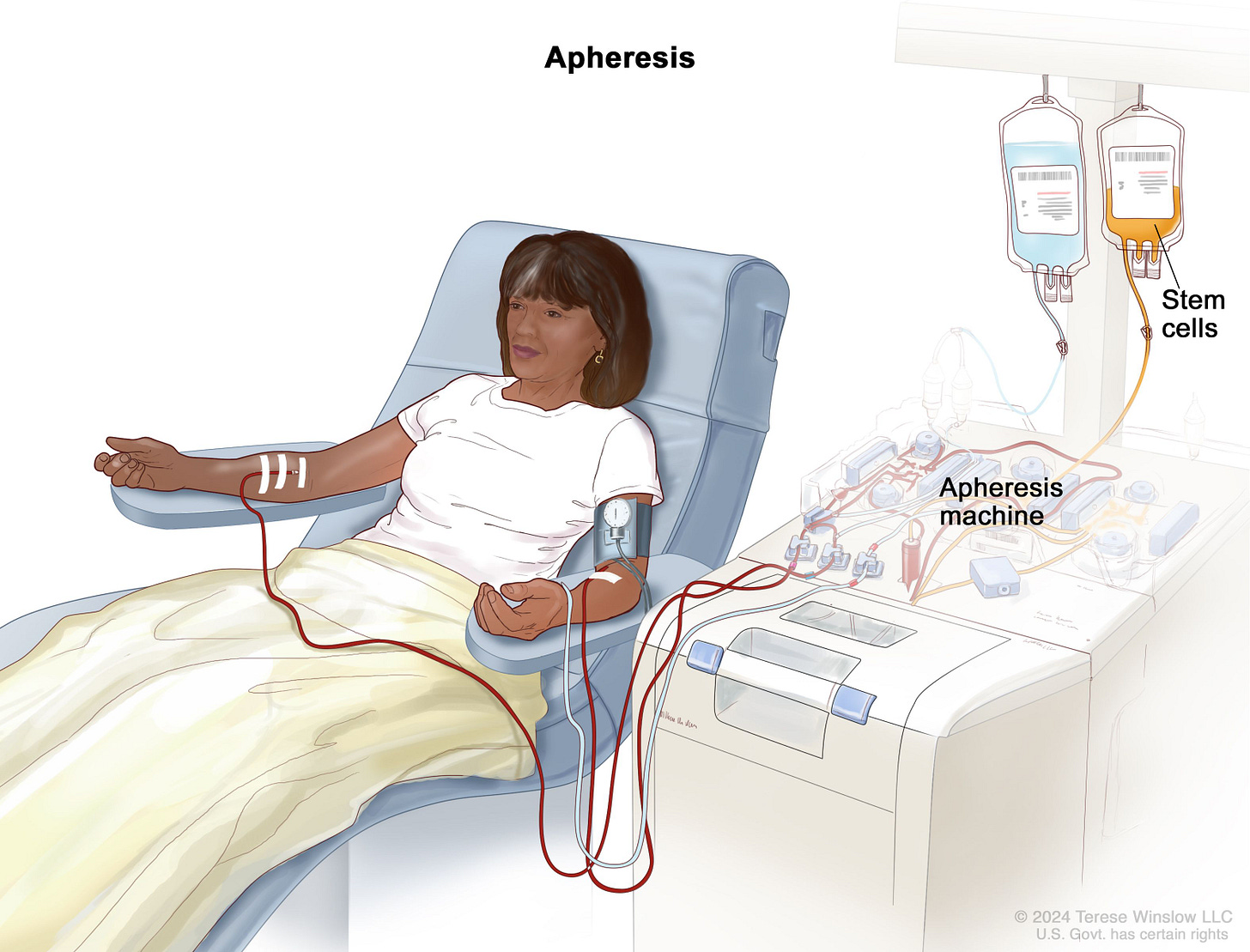Takeaway from Apheresis
Written by Ayebamiebi Yousuo
Apheresis which originally meant "to take away" has been used to mean different things in linguistics and medicine.
The linguists define Apheresis as the omission at the beginning of a word as in 'till' for 'until' whereas the medics define Apheresis as a procedure in which blood is drawn and separated into its components by dialysis; some are retained and the rest are returned to the donor by transfusion.
Why Perform Apheresis?
Apheresis is performed for 2 major reasons:
To get a component of blood from a donor, this is known as Donation Apheresis.
To do away with a component of blood causing a disease in a patient, and is known as Therapy Apheresis.
Below are some of the types of Apheresis and their possible application:
A. Plasmapheresis: From the word it can be denoted that the component needed here is the plasma. The big question is what happens to the donor when his/her plasma is taken? Well, in Donation apheresis Just like in blood donation, there will be no need for replacement as only a small portion is taken, but in Therapy Apheresis, the volume taken is replaced with an appropriate physiological fluid therefore restoring the blood volume, and in some disease conditions the plasma volume is replace with fresh frozen plasma(FFP).
B. Erythrocytapheresis: in this type of Apheresis the targeted blood components are the Red Blood Cells (RBCs) and this can be used for a patient with sickle cell anemia.
C. Leukapheresis: I guess you have already figured out what this is about from its name. Here we seek to take away White Blood Cells (WBCs) majorly Neutrophils, Eosinophils, and Basophils.
These leukocytes from a healthy patient can be used to replace those from a patient with ineffective ones.
D. Plateletapheresis: here the platelets are the target. In patients with tendencies for Hypercoagulability from thrombocythemia, their platelets can be reduced by this method as a means of therapy.
E. Stem Cell Harvesting: the bone marrow can be stimulated to release stem cells that go on to circulate in the blood from where they are harvested and used in peripheral stem cell transplantation. Indeed it can be seen that there is a wide range of therapeutic applications of Apheresis even as scientists continue to explore more options.
Indeed it can be seen that there is a wide range of therapeutic applications of Apheresis even as scientists continue to explore more options
References
https://my.clevelandclinic.org/health/procedures/apheresis
Written by Ayebamiebi Yousuo from MEDILOQUY


